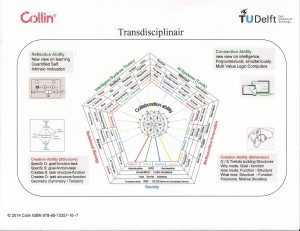
DOC: OSE Chinese – Chapter 3 2014_12_15
全文下方折
Full Text Below the Fold

The truth at any cost lowers all other costs — curated by former US spy Robert David Steele.

DOC: OSE Chinese – Chapter 2 2014_12_15
在中国所有章节 – All Chapters in Chinese
全文下方折 – Full Text Below the Fold

DOC: OSE Chinese – Chapter 1 2014_12_15
在中国所有章节 – All Chapters in Chinese
另请参阅一个开源的(技术)机构的提议在http://tinyurl.com/VP-OSA,谷歌翻译,可以用来读取,在简化或传统中国人。作者是被邀请到中国讨论这些可能性非常感兴趣;他在新加坡长大,将荣幸地被要求在中国建立或亚洲这在任何地方。
Lìng qǐng cānyuè yīgè kāiyuán de (jìshù) jīgòu de tíyì zài http://Tinyurl.Com/VP-OSA, gǔgē fānyì, kěyǐ yòng lái dòu qǔ, zài jiǎnhuà huò chuántǒng zhōngguó rén. Zuòzhě shì bèi yāoqǐng dào zhōngguó tǎolùn zhèxiē kěnéng xìng fēicháng gǎn xìngqù; tā zài xīnjiāpō zhǎng dà, jiāng róngxìng dì bèi yāoqiú zài zhōngguó jiànlì huò yàzhōu zhè zài rènhé dìfāng.
全文下方折 – Full Text Below the Fold

The Collin method enables people to excellarate (capabilities and knowledge) in very short time (months). Recently we succeeded in cooperating with several universities (Delft, Utrecht, Brussel). Firts project is about the potential of Collin itself. Since a month we are involved in an project called ‘rethinking systems engineering’ by INCOSE (international organisation of systems engineers). They asked us to bring in our method as a model for rethinking and boost SE with humans/subject as part of better engineering. Our holistic view is translated in the model that occurs to the ‘tower of life’. We call it Collin Universal Cooperation model. It contains all functions of reflection and creation we found, plus the relations between them (vertical and horizontal and crossing). The betaversion of this model to support complex work and engineering innovations of any kind will be ready early 2015.

PDF (11 Pages) Collin Body of Knowledge 2014

MicroMappers: Towards Next Generation Humanitarian Technology
The MicroMappers platform has come a long way and still has a ways to go. Our vision for MicroMappers is simple: combine human computing (smart crowd-sourcing) with machine computing (artificial intelligence) to filter, fuse and map a variety of different data types such as text, photo, video and satellite/aerial imagery. To do this, we have created a collection of “Clickers” for MicroMappers. Clickers are simply web-based crowdsourcing apps used to make sense of “Big Data”. The “Text Cicker” is used to filter tweets & SMS’s; “Photo Clicker” to filter photos; “Video Clicker” to filter videos and yes the Satellite & Aerial Clickers to filter both satellite and aerial imagery. These are the “Data Clickers”. We also have a collection of “Geo Clickers” that digital volunteers use to geo-tag tweets, photos and videos filtered by the “Data Clickers”. Note that these “Geo Clickers” automatically display the results of the crowdsourced geo-tagging on our Micro-Maps like the one below.
Continue reading “Patrick Meier: MicroMappers – Toward Next Generation Humanitarian Technology”

Artificial Intelligence: Duh? What?
I have been following the “AI will kill us”, the landscape of machine intelligence craziness, and “Artificial Intelligence Isn’t a Threat—Yet.”
The most recent big thinking on this subject appears in the Wall Street Journal, an organization in need of any type of intelligence: Machine, managerial, fiscal, online, and sci-fi.
Harsh? Hmm. The Wall Street Journal has been running full page ads for Factiva. If you are not familiar with this for fee service, think 1981. The system gathers “high value” content and makes it available to humans clever enough to guess the keywords that unlock, not answers, but a list of documents presumably germane to the keyword query. There are wrappers that make Factiva more fetching. But NGIA systems (what I call next generation information access systems) use the Factiva methods perfected 40 years ago as a utility.